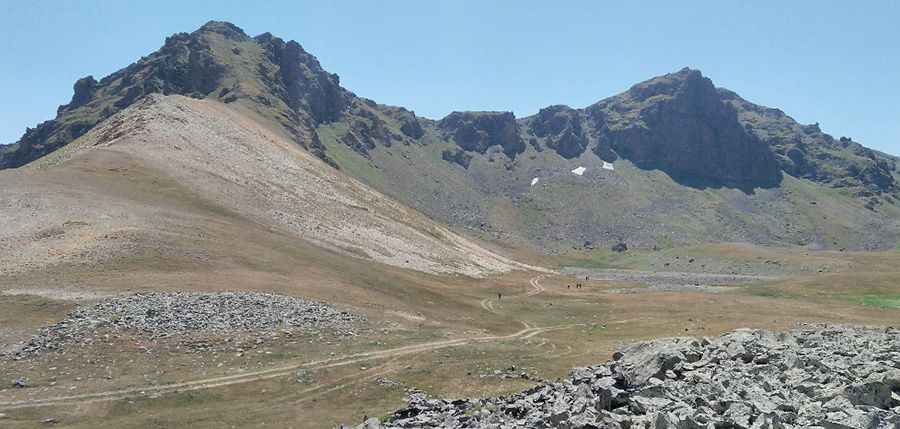Mount Ughtasar is for 4wd vehicles in good weather only
Mount Ughtasar is a high mountain peak at an elevation of 3.296m (10,813ft) above sea level, located in the Syunik Province of Armenia. The site is reached only by four-wheel drive in good weather (the best time to visit is between mid-July and the end of August). It's one of the highest roads in the country.

How long is the road to Mount Ughtasar?
The road to the summit is extreme. It’s totally unpaved. Starting from Ishkhanasar, the track is 17km (10.56 miles) long, climbing 1,500m from the settlement, and requires a 4x4 vehicle. It takes about 90 minutes to complete the drive, although the last 500m has to be walked as the vehicle cannot make the steep ascent when fully laden. Mount Ughtasar can be reached following car tracks, which can be barely visible at times, for 15 km up to an altitude of 3,000 m. You then need to walk the remaining 500 m to the petroglyph field.
Is the road to Mount Ughtasar open in winter?
Set high in the Ishkhanasar range, near the border with Azerbaijan, the trip can be undertaken only in July and August, during good weather conditions. An experienced driver and guide are necessary to reach the site, and explain the most interesting designs. The road is dangerous because the extreme weather: blizzard, strong winds, fog, low visibility, black ice on some road sections and danger of avalanche are common. You can always see blocks of ice in the lake and the snow almost never melts completely in roundabouts.
Is Mount Ughtasar worth the drive?
At the summit there’s a beautiful lake called Ughtasar lake and the famous Ughtasar Petroglyph Field, ghtasar Petroglyph Field. The name of the mountain derives from the word ught (meaning “camel”) due to its resemblance to a camel toe. The territory around the mountain and the mountain itself is famous for various petroglyphs engraved on the rocks. The latter are pictures depicted on black and grey stones of volcanic origin. You can find circles, spirals, spots, lines and other geometrical and abstract forms, as well as figures of animals and human beings, the hunting, cult and cosmos of the primeval person, flora and fauna in all its richness on those stones. These petroglyphs are of great importance till our days as they give us a complete picture of the primeval life including agriculture, fighting and dances. Curiously enough there are no birds on those petroglyphs.
Pic: Hrair Sargsyan